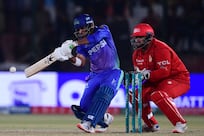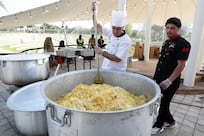Local banks would need a capital injection of up to Dh15.8 billion (US$4.3bn) to meet the country's regulatory standards in the event of a severe financial crisis, a stress test has found. Abu Dhabi Commercial Bank (ADCB), Emirates NBD and Commercial Bank of Dubai (CBD) would need the most financial support, Shuaa Capital's assessment of eight local lenders has concluded.
"Overall, we found that banks in the UAE are reasonably well capitalised and would be able to absorb the worst-case scenario and still be above Basel II international standards," said Khatija Haque, an economist at the investment bank, based in Dubai. Shuaa used five scenarios of varying severity to assess the financial health of Emirates NBD, National Bank of Abu Dhabi, ADCB, Mashreqbank, First Gulf Bank, Dubai Islamic Bank, Union National Bank and CBD, which together accounted for almost 70 per cent of banking system assets last year.
Focusing on the banks' riskiest assets, the test assessed what would happen if loans extended at the peak of the credit and property boom in 2008 turned sour. Potential losses connected to banks' exposure to the two Saudi conglomerates, the Saad Group and Ahmad Hamad Al Gosaibi and Brothers, and Dubai World were also taken into account in addition to re-negotiated loans appearing on balance sheets last year.
The test distinguished between the higher-risk exposure of Dubai banks to the property market than Abu Dhabi lenders. Under Shuaa's least severe scenario, the average total capital adequacy ratio of the sample was 14.9 per cent, above the 12 per cent minimum stipulated by the UAE Central Bank. Average Tier 1 capital, a measure of a bank's core strength, was 9.8 per cent, also above the 8 per cent UAE minimum.
The worst-case scenario would involve the average total capital adequacy ratio dropping to 11.8 per cent, and average Tier 1 capital falling to 6.5 per cent; both still above standards set by Basel II. Capital injections would be required for individual banks in all the scenarios, ranging from Dh2.5bn in the least severe case up to Dh15.8bn in the worst case, Shuaa said. The authorities had the capacity to provide the level of required financial support, if required, it said.
UAE banks are recovering from one of the worst global financial crises, which caused a rise in the number of defaults and late payments on loans. However, analysts say banks are well positioned to withstand future financial turmoil. "Banks are still very well capitalised and with this level of capitalisation it would take a huge shock to cause a solvency issue," said Raj Madha, a senior banking analyst at Rasmala Investment Bank.
Nevertheless, uncertainty about potential future losses is discouraging banks from lending, which is required to help stimulate the economy. "We are not very optimistic on lending growth," said So¿a el Boury, a banking analyst at Shuaa Capital. "It will pick up if there's a completion of Dubai World and the finalisation of the restructuring provides a boost in terms of confidence." In order to help kick-start lending, Shuaa has said UAE authorities should consider steps to clean up banks' balance sheets to encourage a resumption of lending. One example could be following the Irish government's approach of removing toxic assets from balance sheets and replacing them with low-risk government securities.
Broad structural and economic reform, however, including greater transparency by banks, was likely to be the most effective tool for restoring confidence and improving access to funding over the long term, Shuaa said. @Email:tarnold@thenational.ae




